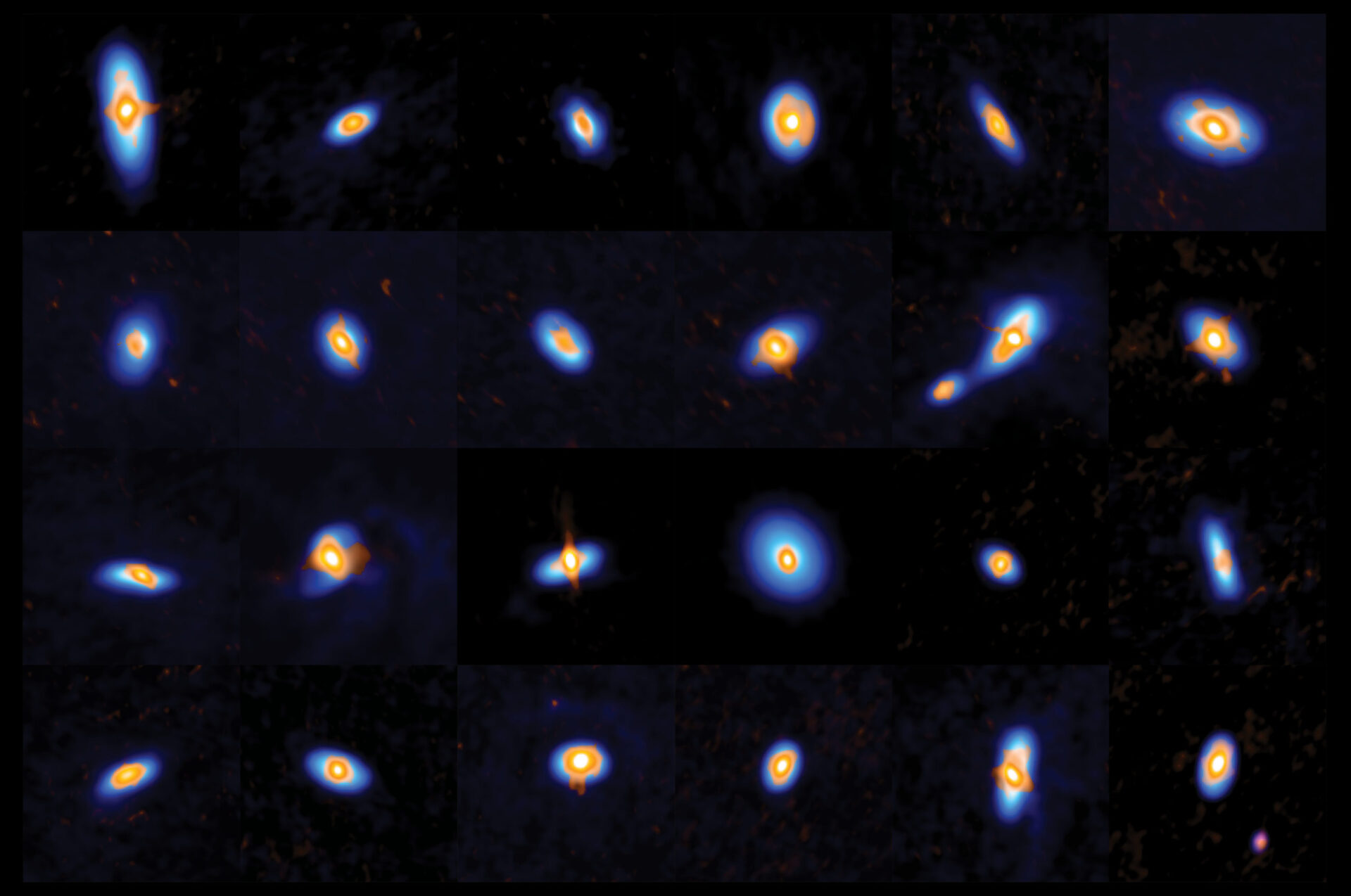ALMA | NRAO | NAOJ | ESO | 2020 Feb 20
An international team of astronomers used two of the most powerful radio telescopes in the world to create more than three hundred images of planet-forming disks around very young stars in the Orion Clouds. These images reveal new details about the birthplaces of planets and the earliest stages of star formation.
- VANDAM Survey: ALMA and the VLA observed more than 300 protostars and their young protoplanetary disks in Orion. This mage shows a subset of stars, including a few binaries. The ALMA and VLA data compliment each other: ALMA sees the outer disk structure (blue), and the VLA observes the inner disks and star cores (orange). Credit: ALMA (ESO/NAOJ/NRAO), J. Tobin; NRAO/AUI/NSF, S. Dagnello
Most of the stars in the universe are accompanied by planets. These planets are born in rings of dust and gas, called protoplanetary disks. Even very young stars are surrounded by these disks. Astronomers want to know exactly when these disks start to form, and what they look like. But young stars are very faint, and there are dense clouds of dust and gas surrounding them in stellar nurseries. Only highly sensitive radio telescope arrays can spot the tiny disks around these infant stars amidst the densely packed material in these clouds.
For this new research, astronomers pointed both the Atacama Large Millimeter/submillimeter Array (ALMA) and the National Science Foundation’s Karl G. Jansky Very Large Array (VLA) to a region in space where many stars are born: the Orion Molecular Clouds. This survey, called VLA/ALMA Nascent Disk and Multiplicity (VANDAM), is the largest survey of young stars and their disks to date.
Very young stars, also called protostars, form in clouds of gas and dust in space. The first step in the formation of a star is when these dense clouds collapse due to gravity. As the cloud collapses, it begins to spin – forming a flattened disk around the protostar. Material from the disk continues to feed the star and make it grow. Eventually, the left-over material in the disk is expected to form planets.
Many aspects about these first stages of star formation, and how the disk forms, are still unclear. But this new survey provides some missing clues as the VLA and ALMA peered through the dense clouds and observed hundreds of protostars and their disks in various stages of their formation. ...
The VLA/ALMA Nascent Disk and Multiplicity (VANDAM) Survey of Orion Protostars.
II. A Statistical Characterization of Class 0 and I Protostellar Disks ~ John J. Tobin et al
- Astrophysical Journal 890(2):130 (20 Feb 2020) DOI: 10.3847/1538-4357/ab6f64
- arXiv.org > astro-ph > arXiv:2001.04468 > 13 Jan 2020
Protostars Within 10,000 Years of Formation? ~ Nicole Karnath et al
- Astrophysical Journal 890(2):129 (20 Feb 2020) DOI: 10.3847/1538-4357/ab659e
- arXiv.org > astro-ph > arXiv:2001.04997 > 14 Jan 2020
